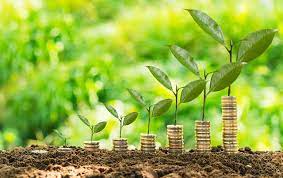
Green Growth

In March 2005, at the fifth Ministerial Conference on Environment and Development (MCED) in Seoul, the concept of green growth over sustainable development originated. Green growth is a paradigm in which green policies, technology, and investments drive sustainable economic development. According to the report by OCED, Green growth means fostering economic growth and development while ensuring that natural assets continue to provide the resources and environmental services on which our well-being is dependent. To do this, it must catalyze investment and innovation which will underpin sustained growth and give rise to new economic opportunities for all in inclusive ways. Achieving the Sustainable Development Goals (SDGs) and long-term climate objectives requires substantial investment globally. Private capitalization will be required to address climate change and broader sustainability challenges.
Need for Green Growth
Long-term projections in several types of research suggest that if we continue to follow “business as usual”, without policy changes, the continuation of growth will severely impact the climate, natural resources and ecosystems on which economic activities rely. This highlights the need to shift to a new development path that is consistent with protection of the environment and sustainable use of natural resources, while still achieving measurable gains in living standards and reducing poverty. The OECD framework for monitoring progress towards green growth includes indicators in four areas:
(1) the environmental and resource productivity of the economy;
(2) the natural assets;
(3) the environmental domain; and
(4) economic opportunities and policies.
Green growth policies are an integral part of the structural reforms needed for robust, more sustainable and inclusive growth. Greening the growth path depends on the policy and institutional settings, level of development, social structures, resource endowments and particular environmental pressure points in any economy. Advanced, emerging and developing countries will face challenges and opportunities differently. Green growth strategies need to go in accordance with the main pillars of action to promote social equity, more intensive human capital investment, inclusive employment promotion and well-designed taxation policies. The OECD report on green growth and developing countries aims to identify challenging areas in which green growth objectives could be achieved and the policies, regulations, technology, financing and new market and innovation opportunities that could help them deliver. It reviews key limitations and includes options for a policy framework and a set of criteria that developing countries could consider in their efforts toward green growth policy framing. Research on how progress could be accessed is already being done. A strategic transition to a greener economy will create opportunities for businesses and workers. There are also barriers limiting the development and diffusion of environmental technologies, such as skills shortages, limited innovation capacity, lack of competition, lack of public acceptance of new technologies, infrastructure limitations, policy misalignments and uncertainty, and financial barriers. Many of the technologies needed for green growth already exist. Artificial Intelligence (AI), promise to advance low-emissions technologies even further, provided there are sufficient incentives for public and private investment in R&D. However, many existing solutions are not yet deployed at scale. The key policy priority is addressing barriers to their deployment and to new innovations.








